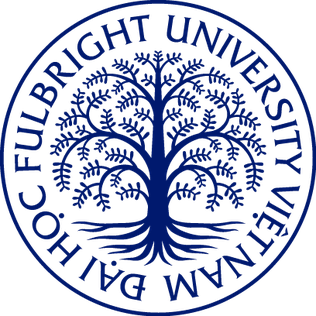
Ho Chi Minh City, better known as Saigon, is the most populous city in Vietnam, with a population of around 10 million in 2023. The city's geography is defined by rivers and canals, of which the largest is Saigon River. As a municipality, Ho Chi Minh City consists of 16 urban districts, five rural districts, and one municipal city (sub-city). As the largest financial centre in Vietnam, Ho Chi Minh City has the highest gross regional domestic product out of all Vietnam provinces and municipalities, contributing around a quarter of the country's total GDP. Ho Chi Minh City's metropolitan area is ASEAN's 6th largest economy, also the biggest outside an ASEAN country capital.

The fall of Saigon was the capture of Saigon, the capital of South Vietnam, by North Vietnam and North Vietnam-controlled Viet Cong on 30 April 1975. The event marked the end of the Vietnam War and the collapse of the South Vietnamese state, leading to a transition period and the formal reunification of Vietnam into the Socialist Republic of Vietnam under communist rule on 2 July 1976.

Nguyễn Xuân Oánh, nicknamed Jack Owens, was a Vietnamese economist and politician who held senior positions in the governments of both South Vietnam and the current Socialist Republic of Vietnam.

District 1 is the central urban district of Ho Chi Minh City (Saigon), the largest city in Vietnam. With a total area of 7.7211 km2 (2.9811 sq mi) the district has a population of 204,899 people as of 2010. The district is divided into 10 small subsets which are called wards (phường). District 1 contains most of the city's administrative offices, consulates, and large buildings. District 1 is the busiest district in the city with the highest living standards. Đồng Khởi Street and Nguyễn Huệ Boulevard in District 1 are the city's two main commercial centers. Đồng Khởi street is an area in high demand for real estate, hitting a record price of $50,000 per square meter in 2007.

Formal relations between the United States and Vietnam were initiated in the nineteenth century under former American president Andrew Jackson, but relations soured after the United States refused to protect the Kingdom of Vietnam from a French invasion.

Le Van Tam Park, previously known as Mạc Đĩnh Chi Cemetery, is a park in Ho Chi Minh City, Vietnam. It formerly was a large and prestigious French colonial cemetery in South Vietnam, located near the US Embassy, Saigon. The cemetery had a wooded, bucolic setting, surrounded by a tall concrete wall, with a gated entrance on Hai Ba Trung Street. It originated as the burial ground for those killed during the 1859 battle for the Gia Dinh Citadel.

Foreign relations exist between Australia and Vietnam. Australia has an embassy in Hanoi and a consulate in Ho Chi Minh City. Vietnam has an embassy in Canberra.

The United States Embassy in Saigon was first established in June 1952, and moved into a new building in 1967 and eventually closed in 1975. The embassy was the scene of a number of significant events of the Vietnam War, most notably the Viet Cong attack during the Tet Offensive which helped turn American public opinion against the war, and the helicopter evacuation during the Fall of Saigon after which the embassy closed permanently.

Indonesia and Vietnam established diplomatic relations in 1955. Indonesia has an embassy in Hanoi and a consulate general in Ho Chi Minh City while Vietnam has an embassy in Jakarta. Both are neighboring nations that have a maritime border which lies on the South China Sea and are members of ASEAN and APEC.

The Consulate General of Canada in Ho Chi Minh City is located on the 10th Floor of Ho Chi Minh City's Metropolitan Building at 235 Đồng Khởi Street, in District 1.

Fulbright University Vietnam (FUV) is a private nonprofit university currently located at the Crescent Plaza in Phú Mỹ Hưng, the new headquarters will be at the Saigon Hi-Tech Park in near future, after the new campus here is done in 2026, both in Hồ Chí Minh City, Vietnam. It is one of Vietnam's first private, nonprofit institutions of higher education. The FUV concept emerged from discussions convened by the Vietnam Program at the Harvard Kennedy School aimed at planning the next stage in the development of the Fulbright Economics Teaching Program (FETP), a center of public policy research and teaching in Hồ Chí Minh City.

The Deutsches Haus Ho Chi Minh City is a building complex in Ho Chi Minh City, Vietnam, which was opened 2017. The 25-story building complex was initiated under a bilateral government agreement between Germany and Vietnam, with the purpose of setting standards for energy efficiency “made in Germany.” It is the location of the German Consulate General and other institutions and businesses, as well as a cultural and economic hub for German representation in Vietnam.

Canada and Vietnam have maintained bilateral relations since 1973. Both nations are members of the Asia-Pacific Economic Cooperation, Organisation internationale de la Francophonie and the United Nations.
The Consulate-General of France in Ho Chi Minh City is a diplomatic mission of France to Vietnam. Located in Ho Chi Minh City, it previously served as an official residence for French leaders (1872-1945), the home of the French High Commissioner (1945-1954) and the embassy to South Vietnam. As a consulate, it opened in 2003. It has been noted for its historical architecture and artifacts.

Lê Duẩn Boulevard is a boulevard in District 1, downtown Ho Chi Minh City, Vietnam. The boulevard stretches from Nam Kỳ Khởi Nghĩa Street, right across from the Independence Palace, to Nguyễn Bỉnh Khiêm Street, right across from the Saigon Zoo and Botanical Gardens.















